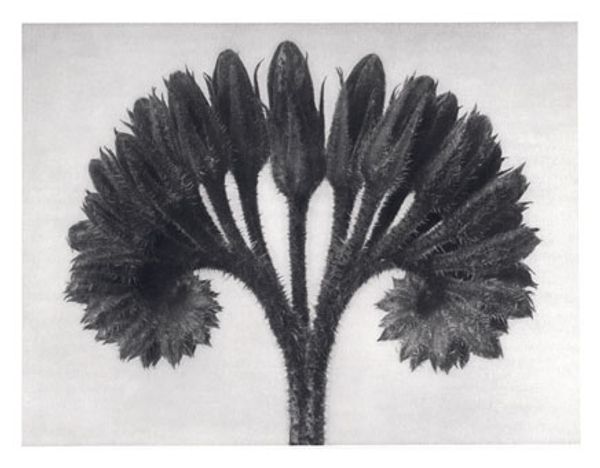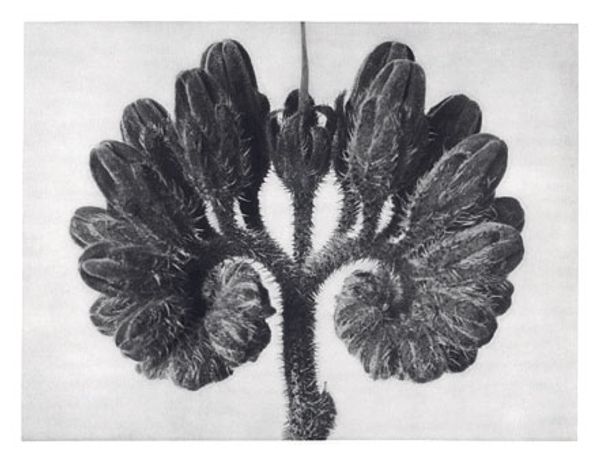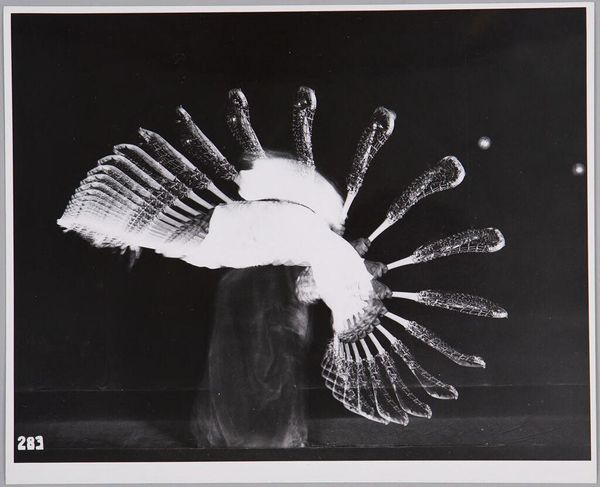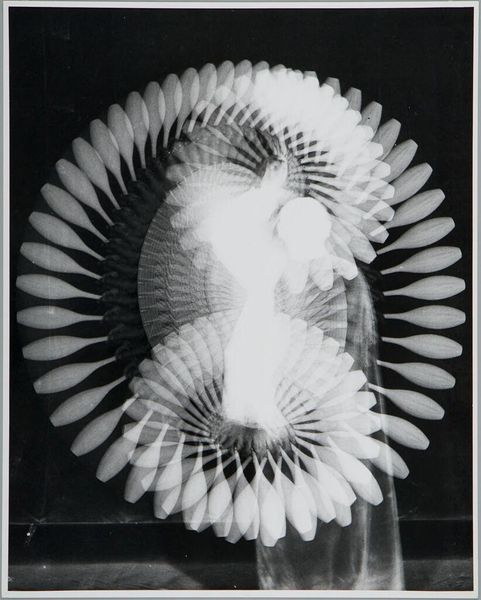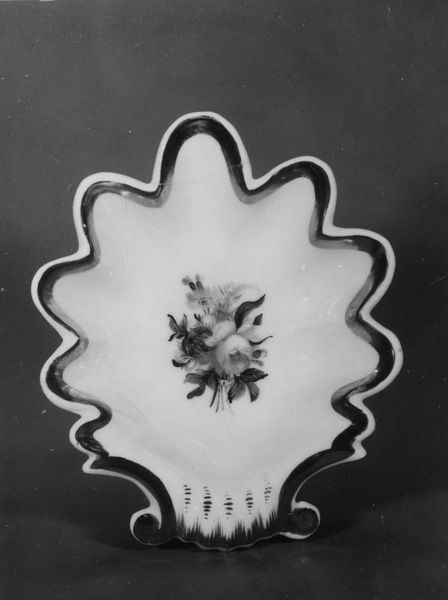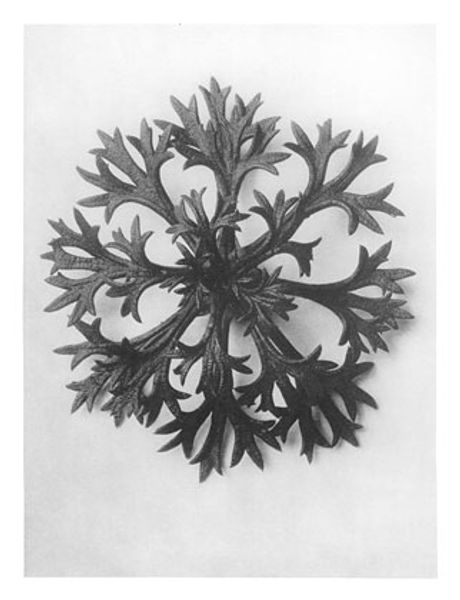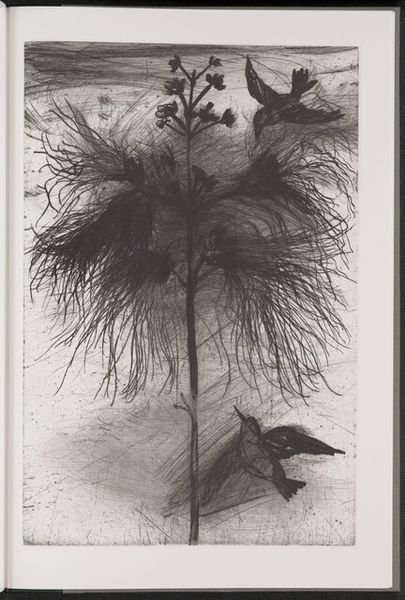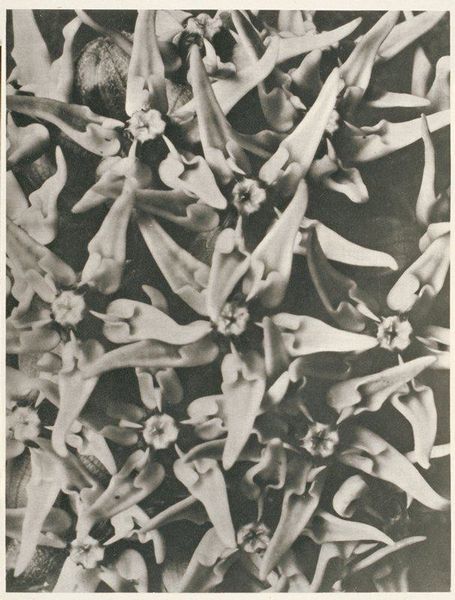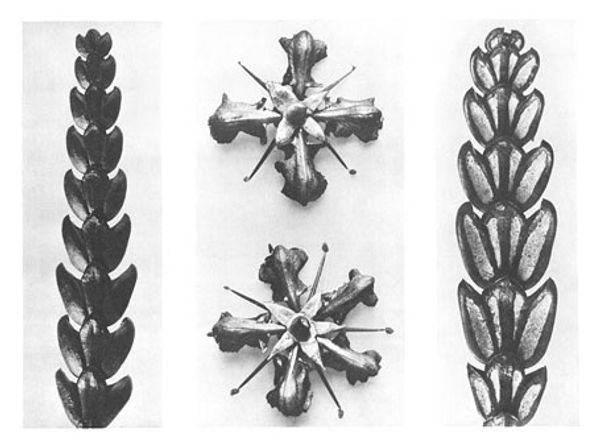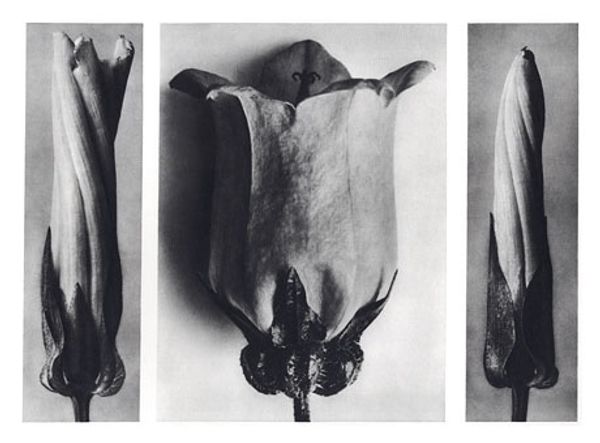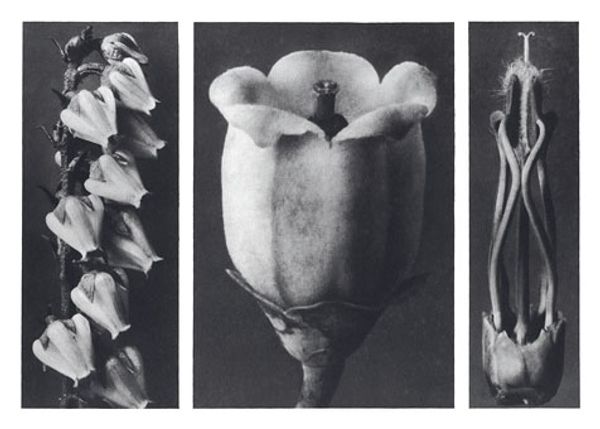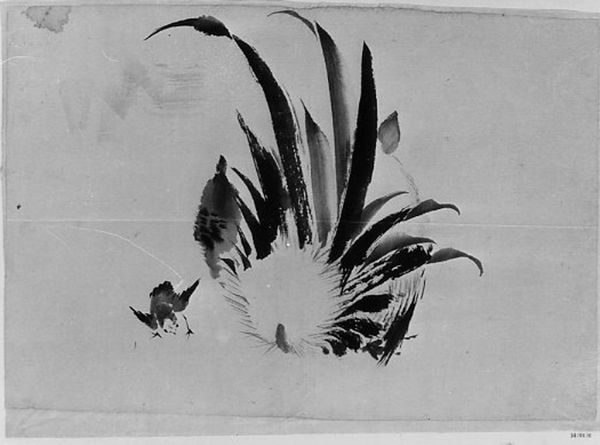
Copyright: Public domain
Editor: Here we have Karl Blossfeldt’s “Art Forms in Nature 62,” a gelatin-silver print from 1928. It’s striking how the close-up and stark monochrome give the plant this alien, architectural quality. What underlying meanings do you find in Blossfeldt's exploration of nature? Curator: It's tempting to read in an underlying gothic mood! These photos aren't just about depicting plant forms. They reflect a broader cultural interest in revealing the hidden structures and symbolic weight of the natural world, echoing broader social transitions of the time. Notice the near-scientific precision? This points to the symbol of uncovering hidden truths. How does it contrast with artistic freedom? Editor: It is almost like revealing the mathematical underpinning of life...I hadn’t really considered that at first glance! Do you see the "still life" aspect affecting the overall interpretation? Curator: The still life here isn't about domestic tranquility. Instead, it invokes notions of timelessness but also points to vanitas. How can an image of natural form echo notions of inevitable decay? Think of this against the backdrop of a Europe facing rapid change...This is what informs my reading of gothic moods! Editor: So the architectural presentation mixed with notions of gothic vanity, decay. I wonder if these readings can be imposed or found. The conversation has widened the possible emotional narratives. Curator: Indeed! The photograph provides visual echoes; we each choose how to hear them.
Comments
No comments
Be the first to comment and join the conversation on the ultimate creative platform.
